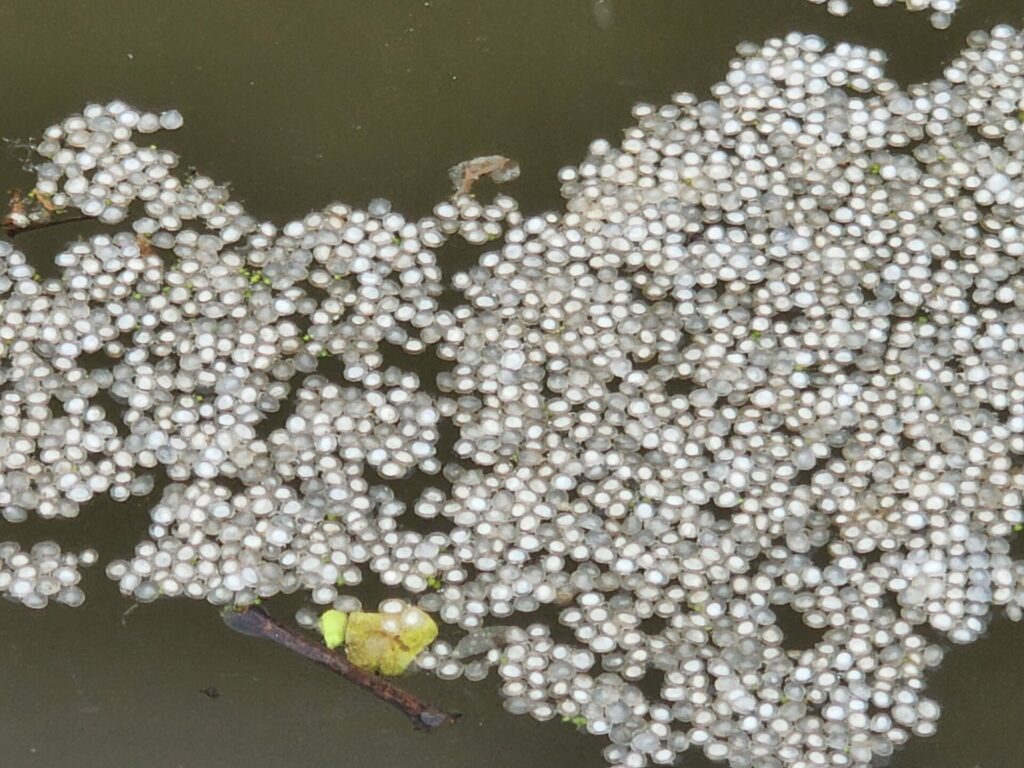When a train carrying sweet crude oil collided with a construction truck carrying stone on May 26 in Allegheny County, nine rail cars plunged into the river. One tanker cracked upon impact with the stones below and leaked an estimated 3,000 gallons of crude into Guy Run, a few hundred feet from the Allegheny River. But the train line was stocked with more than fuel. Alongside liquid tankers, “buffer cars” filled with nurdles careened into the water and crumpled on the riverbanks.

When I started working at Mountain Watershed Association, one of my first assignments was to help organize the nurdle patrol. I had no idea what nurdles were until I looked them up. They’re tiny plastic pellets, the nubs used to fill hackey-sacks and beanie babies, but mostly they’re melted down and pressed into bags and bottles and wrappers. The nurdle patrol would run sampling in waterways and on riverbanks for the floating polymer coins.
We began this rigorous sampling because soon, Shell’s Beaver County Cracker Plant will come online. Projections suggest as early as Summer or Fall of 2022. This facility’s chief output will be nurdles produced from fracked gas, which will then be shipped overseas for more specialized plastic production. The plant will instantly become the largest of its kind on the continent. Nurdles will likely be transported by rail car or barged and based on the experiences of other groups, some of these nurdles will end up in waterways we depend on.
Why would this matter?
- Nurdles “sponge” toxins, growing more harmful the longer they remain in rivers – at times concentrating toxins a million times more than in the water.
- As a polymer, they do not biodegrade. They may enter and re-enter the watershed many times.
- Many nurdles resemble fish, frog, or insect eggs. Surface feeders including birds, turtles, and fish are likely to ingest nurdles. This can poison them or lead to digestive impaction, killing them.
- Nurdle-eating fish caught and consumed may pass toxins up the food web to people. This is also true for eagles, herons, and other animals that predate on fish.

Contrary to our expectations, MWA and “nurdle turtle” volunteers have found deposits of the plastic pieces since day one, both floating downriver and glowing in the strand line. Clearly, contamination has already taken place, albeit on a small scale. Since initiating our sampling, MWA has ramped up the frequency of data collection, partnering closely with 3-Rivers Waterkeeper and labs at UPitt and Penn State who run chemical analyses to examine what toxins have been absorbed by the nurdles, as well as polymer analysis to distinguish collected nurdles from potential sources and from future pollution.
Last week, MWA and 3-Rivers Waterkeeper teamed up to test our protocol against a spill where thousands and thousands of pellets escaped at once. If there’s even a possibility of such an incident occurring at the massive cracker plant, we need to be prepared. As we coasted up the Allegheny River toward the site, we noticed clusters of plastic eerily reminiscent of frog eggs gleaming along the floating booms set out by EPA cleanup agents. Beneath the scrunched cargo freighters, piles of white stretched to the water line. In some locations, it looked as if it had snowed.

The federal workers had not arrived in time to catch it all. As we nudged the boat into muddy banks downriver, hundreds of shiny white eyes lay stranded in piles. The pipers, turtles and squirrels we saw plucking along the water line may have already started ingesting them. In our two years of regular sampling, we hadn’t seen anything quite like it. Typically, on land patrols, we sift through debris lines hunting for nurdles stuck to waterlogged vegetation for fifteen minutes, finding between ten and twenty plastic kernels. This time, we knelt in the pebbles and picked them as quickly as our fingers allowed, ending with counts in the hundreds.

It’s not all bad. While many nurdles escaped, many were blocked by the booms set in Guy Run and the Allegheny River. Perhaps more importantly, this spill highlighted the importance of land-based sampling, especially by citizen scientists. The more data we keep now, the better shot we have of exposing large spills in the future. While MWA’s float patrol captures nurdles flowing downriver, the real test is how many nurdles appear on embankments along the waterways. If you spend time by or in the water, reach out to me at james@mtwatershed.com, especially if you fish or boat along the Ohio River, Beaver River, or Raccoon Creek. A land patrol takes just fifteen minutes and links to a national database, helping to keep our region clean and hold polluters accountable. Spills and releases are preventable, but they won’t stop without someone keeping track of them.

